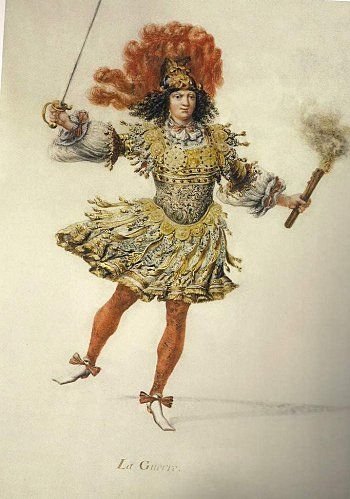The Noble Origins of Ballet: A Journey from Renaissance Courts to Global Stages
When we think of ballet today, images of ethereal dancers in tutus and pointe shoes performing on grand stages often come to mind. However, the origins of this graceful art form are far removed from the modern theatre. Ballet's story begins in the opulent courts of the Italian Renaissance, where it was a spectacle of dance, music, and poetry performed by noble amateurs.
The Birthplace of Ballet: Italian Renaissance Courts
The 15th century marked the dawn of the Renaissance, a period of cultural revival and flourishing arts in Europe. It was within the lavish courts of Italy that ballet first emerged as a distinct form of entertainment.
Unlike the professional ballet dancers we know today, the early practitioners of ballet were nobles and courtiers, performing to impress their peers and patrons during extravagant banquets and celebrations.
A Fusion of Art Forms
Ballet in the Renaissance was not solely about dance. It was an elaborate performance that combined multiple art forms. Dance sequences were interspersed with musical interludes and poetic recitations, creating a rich tapestry of entertainment. These performances were meticulously choreographed to reflect themes of mythology, romance, and chivalry, resonating with the intellectual and artistic spirit of the era.
From Italy to France: The Spread of Ballet
The seeds of ballet planted in Italy began to spread beyond its borders, and it was particularly well-received in France. This cultural migration was significantly influenced by Catherine de' Medici, an Italian noblewoman who became the Queen of France in 1547. Catherine was a passionate patron of the arts, and she brought with her a love for the courtly dances of her homeland.
Under her influence, ballet began to flourish in the French court. It was during this period that ballet started to evolve into a more codified form of dance, moving away from its amateur roots. The performances became grander and more sophisticated, incorporating elaborate sets, costumes, and music composed specifically for the productions.
The Establishment of Professional Ballet
The transformation of ballet from court entertainment to professional art form took a significant leap under the reign of King Louis XIV of France. In 1661, Louis XIV founded the Académie Royale de Danse, the first professional ballet school, aimed at standardising ballet technique and training dancers to a high level of skill. This was a pivotal moment in ballet history, as it laid the groundwork for the professional companies and schools that we see today.
King Louis XIV, known as the Sun King, was even known to perform in ballets himself.
Ballet's Enduring Legacy
From its humble beginnings in the Italian Renaissance courts to its establishment as a professional discipline in France, ballet has undergone a remarkable evolution. It has transcended its origins as a pastime for the nobility to become a global art form, celebrated for its beauty, precision, and emotional depth.
Today, ballet companies around the world continue to draw inspiration from its rich history, blending traditional techniques with contemporary innovations. As we watch a ballet performance, we are not only witnessing a display of physical prowess and artistic expression but also partaking in a centuries-old tradition that began in the resplendent halls of the Renaissance.
Ballet's journey from the courts of Italy to the stages of the world is a testament to its enduring appeal and the timeless human desire to express beauty through movement. As we appreciate the grace and discipline of ballet dancers, we honor a legacy that has been centuries in the making ❤️.




